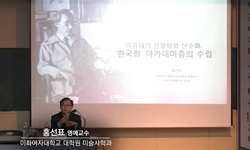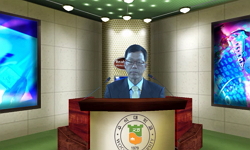The Chinese Architect Wangshu, who won the Pritzker Architecture Prize at 2012, is the first and only winner in China. This study focused on the expression of his unique architectural ideas. Especially with a high interest in Chinese traditional calli...
http://chineseinput.net/에서 pinyin(병음)방식으로 중국어를 변환할 수 있습니다.
변환된 중국어를 복사하여 사용하시면 됩니다.
- 中文 을 입력하시려면 zhongwen을 입력하시고 space를누르시면됩니다.
- 北京 을 입력하시려면 beijing을 입력하시고 space를 누르시면 됩니다.
https://www.riss.kr/link?id=A106746913
- 저자
- 발행기관
- 학술지명
- 권호사항
-
발행연도
2020
-
작성언어
Korean
-
주제어
서예 ; 산수화 ; 모(模)의 구성 ; 유사성 ; 공간 조성 기법 ; 정원 요소 ; 정원 철학 ; 관법 ; Calligraphy ; Landscape Painting ; Modular(模) Composition ; Similarities ; Space Creation Techniques ; Gardening Elements ; Gardening Consciousness ; View Method
-
KDC
540
-
등재정보
KCI우수등재,SCOPUS
-
자료형태
학술저널
- 발행기관 URL
-
수록면
113-121(9쪽)
- DOI식별코드
- 제공처
- 소장기관
-
0
상세조회 -
0
다운로드
부가정보
다국어 초록 (Multilingual Abstract)
The Chinese Architect Wangshu, who won the Pritzker Architecture Prize at 2012, is the first and only winner in China. This study focused on the expression of his unique architectural ideas. Especially with a high interest in Chinese traditional calligraphy and landscape painting, Wangshu tried to use its traditional features to form his own architectural way. First this study looked at the features of calligraphy and landscape painting. Second this research studied the expression of Wangshu’s architectural practice in calligraphy’s way. Lastly this study furthered study of Wangshu’s architecture combined with landscape paintings’ features. The results state these following. 1) For calligraphy, he used the “modular composition” of Chinese characters to architectural composition, which included architectural form and materials. The “similarities” and “space creation” of calligraphy are respectively applied to architectural spatial details and site planning. 2) For landscape painting, Wangshu borrows its elements to compose his architecture with “gardening consciousness”. The “view method” of paintings was used to his architectural pedestrian flows, and Wangshu also based on the “space creation” of landscape painting to do architectural space design with creating the similar atmosphere.
목차 (Table of Contents)
- Abstract
- 1. 서론
- 2. 중국 전통 서예와 산수화에 대한 고찰
- 3. 왕슈 건축에 나타난 서예의 특징과 공간 조성 기법의 응용
- 4. 왕슈 건축에 나타난 산수화의 특징과 공간 조성 기법의 응용
- Abstract
- 1. 서론
- 2. 중국 전통 서예와 산수화에 대한 고찰
- 3. 왕슈 건축에 나타난 서예의 특징과 공간 조성 기법의 응용
- 4. 왕슈 건축에 나타난 산수화의 특징과 공간 조성 기법의 응용
- 5. 결론
- REFERENCES
동일학술지(권/호) 다른 논문
-
가상현실 기반 사용자 참여형 타공패널 파사드 설계 방법론
- 대한건축학회
- 장도진(Jang, Do-Jin)
- 2020
- KCI우수등재,SCOPUS
-
공간 속 독립 오브제로서 배치된 칸의 벽난로에 대한 연구
- 대한건축학회
- 홍예은(Hong, Ye-Eun)
- 2020
- KCI우수등재,SCOPUS
-
수재해 학교 안전교육 실행에 대한 인식 및 요구 분석 - 대구지역 중·고등학교 학생과 교사의 인식을 중심으로 -
- 대한건축학회
- 안영미(Ahn, Young-Mi)
- 2020
- KCI우수등재,SCOPUS
-
도시의 특성을 활용한 스마트 도시계획 연구 - 정조포석의 수원화성을 중심으로 -
- 대한건축학회
- 김민국(Kim, Min-Kook)
- 2020
- KCI우수등재,SCOPUS







 DBpia
DBpia







